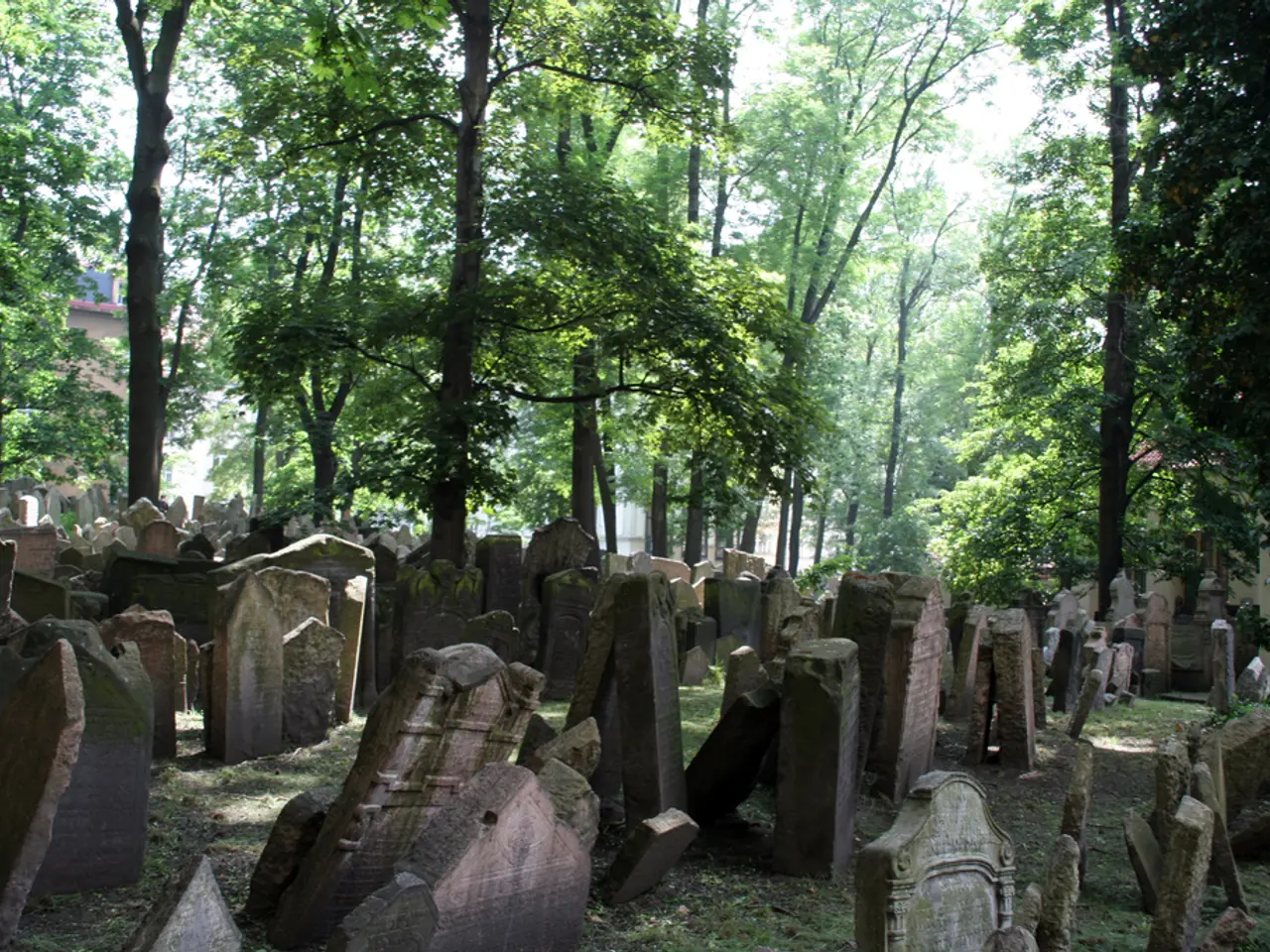Expanding Interest in Wildlife Sanctuaries
France and Germany Embrace Ecological Burial Practices with Sanctuary Forests
In a growing trend across Europe, France and Germany are embracing the concept of sanctuary forests or cinerary forests as green burial options. These innovative practices integrate death with forest and natural landscapes, offering a more eco-friendly alternative to traditional cemeteries.
One notable example of this movement can be found in Schiltigheim, a suburb of Strasbourg, France. The town has recently established a 5,000 square meter plot known as a "sanctuary forest" within its West cemetery. This sanctuary forest allows loved ones to place the ashes of their deceased in an urn and bury them at the foot of an oak, cherry, or maple tree.
Schiltigheim's sanctuary forest is not just attracting attention due to its egalitarian and environmental aspects, but also because it represents a response to space constraints and environmental concerns associated with traditional cemeteries. The trees in this sanctuary forest are left to grow old, halting wood production, and the maintenance will be limited to what is "strictly necessary" to develop its own ecosystem.
Similarly, in Muttersholz, a town in France that was named France's 2017 "capital of biodiversity," almost 500 urns are buried at the foot of 42 oaks and beeches. This forest, once exploited for its wood, is now a funerary site that prioritizes preservation, protecting existing trees or planting new ones.
The trend toward ecological burial has also been observed in Germany, where there is a notable emphasis on preserving natural and primeval forests, such as those recognized by UNESCO as Primeval Beech Forests. While these sites primarily highlight conservation efforts for natural heritage rather than cemeteries, the cultural respect for forest environments aligns with the concept of sanctuary or cinerary forests being a burial alternative.
As more people in France and Germany choose cremation, with 50% of French people saying they would prefer to be cremated today compared to just 20% in 1979, the demand for green burial options is expected to grow. Traditional cemeteries are no longer preferred by many due to their association with overconsumption and the use of materials like plastic flowers, marble, and granite that come from other continents.
This shift encourages a reinterpretation of death as part of natural cycles, fostering a more environmentally sustainable cultural approach to burial. The trend incentivizes cemetery management to adapt practices, sometimes integrating woodland burial areas within larger cemetery grounds or developing new "woodland cemetery" sites inspired by examples like Skogskyrkogården in Sweden, which blends forest and burial landscapes harmoniously.
In summary, while direct detailed examples from the search on sanctuary or cinerary forests in France and Germany are limited, these nations are part of a broader movement in Europe toward ecological, forest-integrated burials. This movement impacts traditional cemeteries by promoting natural habitat preservation, reducing cemetery land use, and changing cultural perceptions of burial through green space integration.
- The trend of sanctuary forests or cinerary forests as eco-friendly burial options is not limited to France and Germany; it's a growing movement across Europe.
- In addition to Schiltigheim and Muttersholz, environmental-science enthusiasts might find interest in Primeval Beech Forests in Germany, which prioritize natural heritage conservation.
- The cultural shift towards green burials in France and Germany, driven by the rise in cremation rates among the population, promotes a climate-change consciousness in health-and-wellness practices.
- As communities prioritize the environment, art and culture often intersect with this movement, seeking harmony between nature and burial landscapes, such as at Skogskyrkogården in Sweden.
- Furthermore, the rise of ecological burials contributes to climate-change mitigation efforts by promoting forest and natural landscape preservation, reducing the carbon footprint associated with traditional cemeteries.




